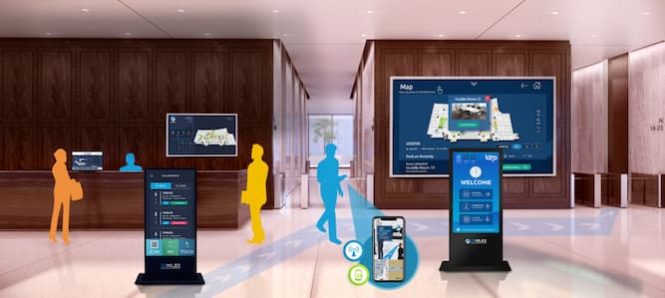
Beyond ADA
The Big Picture
Inclusive wayfinding isn’t just about checking the ADA compliance box—it’s about making every visitor’s journey smoother, smarter, and more dignified. Facilities that exceed the minimum legal standards reap real benefits: happier visitors, more efficient operations, and a reputation for being truly welcoming.
Key Takeaways
1. Hardware Placement & User Experience
-
Height matters: Digital signs should be no higher than 48 inches for wheelchair accessibility.
-
Touch zones: Make interactive elements big enough for users with limited dexterity.
-
Contrast & clarity: Use readable fonts, high contrast, and keep instructions short and sweet.
-
Multiple layouts: Offer toggles for seated/standing users, and consider QR codes for personal device control.
2. Tech That Works for Everyone
-
Personal device integration: QR codes and “take-it-with-you” maps enable users to leverage their accessibility tools (such as voice-over and haptics).
-
Multilingual support: CMS platforms should enable easy language switching or utilize AI to detect and respond in the user’s language automatically.
-
Enhanced accessibility: Features like digital magnifiers, screen readers, and high-contrast modes help users with visual or cognitive impairments.
3. Continuous Feedback & Improvement
-
User involvement: Include people with disabilities in the design and feedback process.
-
Data-driven: Use analytics from your CMS to track which features are used and where users struggle.
-
Reliability: Keep hardware and software up-to-date—downtime is the enemy of accessibility.
4. ROI: Show Me the Numbers
-
Fewer help desk calls: Good wayfinding means less staff time spent on directions.
-
Higher satisfaction: Track user satisfaction before and after upgrades—expect to see a bump.
-
Tenant retention: Facilities with inclusive wayfinding are more attractive to tenants and visitors.
Practical Checklist
-
Audit signage and wayfinding regularly, with honest user feedback.
-
Standardize a clear, accessible design for all digital signage.
-
Ensure wayfinding information is mobile-friendly and device-agnostic.
-
Use AI, QR codes, and voice interfaces for hands-free navigation.
-
Leverage analytics to prove ROI and drive continuous improvement.
Bottom Line
Inclusive wayfinding is a strategic advantage, not just a compliance issue. Facilities that embrace these practices aren’t just doing the right thing—they’re leading the pack in user experience, operational efficiency, and brand reputation. As always: inclusive design is good design. Period1.




